
Kód: 05030082
III Germanic Ss Panzer-Korps
Autor Martin Mansson, Lennart Westberg, Geir Brenden
"These two photographic volumes depict Himmler's favourite unit in the Waffen-SS: the III 'Germanic' SS Panzerkorps, for it fulfilled Himmler's long-time political plans of recruiting 'Germanic' volunteers for the creation of a gr ... celý popis
- Jazyk:
 Angličtina
Angličtina - Väzba: Pevná
- Počet strán: 280
Nakladateľ: Helion & Company, 2019
- Viac informácií o knihe

89.19 €
Dostupnosť:
50 % šanca Máme informáciu, že by titul mohol byť dostupný. Na základe vašej objednávky sa ho pokúsime do 6 týždňov zabezpečiť.
Máme informáciu, že by titul mohol byť dostupný. Na základe vašej objednávky sa ho pokúsime do 6 týždňov zabezpečiť.Prehľadáme celý svet
Mohlo by sa vám tiež páčiť
-
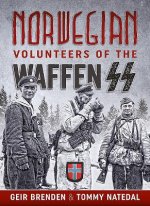
Norwegian Volunteers of the Waffen Ss
111.22 € -
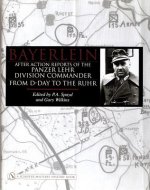
Bayerlein: After Action Reports of the Panzer Lehr Division Commander From D-Day to the Ruhr
56.92 € -6 % -
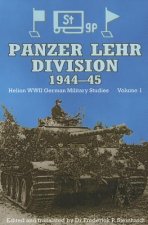
Panzer Lehr Division 1944-45
36.73 € -13 % -
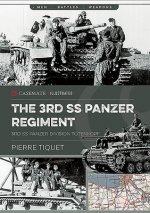
3rd Ss Panzer Regiment
23.13 € -11 % -

History of the Totenkopf's Panther-Abteilung
32.36 € -2 % -
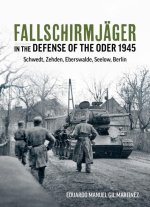
Fallschirmjäger in the Defense of the Oder 1945: Schwedt, Zehden, Eberswalde, Seelow, Berlin
27.19 € -23 % -

Waffen SS Ardennes Offensive
16.43 € -23 % -

KETO DIET AIR FRYER Cookbook for Beginners: Quick and Easy Healthy Air Fryer Recipes for Every Day - Low Carb Keto Diet Recipes for Beginners
21.61 € -
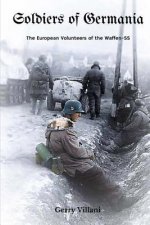
Soldiers of Germania - The European volunteers of the Waffen SS
31.55 € -

Basic Concepts of Geometry
147.24 € -

Story of England
17.75 € -

Business of Audio Engineering
34.60 € -

Migration - The Boundaries of Equality and Justice
27.49 € -

TIGER PROJECT: A Series Devoted to Germany's World War II Tiger Tank Crews: Book One - Alfred Rubbel - Schwere Panzer (Tiger) Abteilung 503
29.22 € -6 %
Darujte túto knihu ešte dnes
- Objednajte knihu a vyberte Zaslať ako darček.
- Obratom obdržíte darovací poukaz na knihu, ktorý môžete ihneď odovzdať obdarovanému.
- Knihu zašleme na adresu obdarovaného, o nič sa nestaráte.
Informovať o naskladnení knihy
Zadajte do formulára e-mailovú adresu a akonáhle knihu naskladníme, zašleme vám o tom správu. Postrážime všetko za vás.
Viac informácií o knihe III Germanic Ss Panzer-Korps
Nákupom získate 222 bodov
 Anotácia knihy
Anotácia knihy
"These two photographic volumes depict Himmler's favourite unit in the Waffen-SS: the III 'Germanic' SS Panzerkorps, for it fulfilled Himmler's long-time political plans of recruiting 'Germanic' volunteers for the creation of a greater Germanic Reich in the future. As such, it consisted in part of SS volunteers from western and northern European countries. Although largely forgotten today, this elite SS unit fought on a variety of battlefields ranging from Croatia and Ingermanland's snow-covered forests near Leningrad to the historic Estonian city of Narva, where it defended the Baltic countries of Estonia and Latvia against the Red Army in 1944-45. The remnants of the Panzerkorps ended up in both the hopeless defence of Pomerania and the final apocalypse at the battle for Brandenburg and Berlin in April-May 1945, when the Third Reich went down in a storm of fire and steel. Volume 1 covers the period from the creation of the III SS Panzerkorps in the summer of 1943 until the German evacuation of Estonia in September 1944. The coverage includes the unit's involvement in anti-partisan operations in Croatia (September-December 1943), the fighting at Oranienbaum-Leningrad and the battle for Ingria (January-February 1944); the defence of the Narva bridgehead and the battles for Dorpat and the Blue Hills, finishing with the German evacuation of Estonia (February-September 1944). On the Eastern front, a motley mix of nationalities and individuals fought under the Swastika and subsequently it was volunteers from various countries who served in the III 'Germanic' SS Panzerkorps, including Norwegians, Danes, Swedes, Swiss, Dutch, Flemings, Walloons, Estonians, Germans and ethnic Germans from Rumania. Even a handful of renegade British volunteers turned up in this unit during the final weeks of WWII. All of these SS soldiers had widely varying reasons for joining the Waffen-SS. These volumes not only include well over 1,000 partly unpublished photographs of the III SS Panzerkorps during 1943-45, but also a large number of previously unpublished personal battle descriptions by surviving officers and soldiers of this corps from the authors' archives of personal correspondence. The photographs are also accompanied by interesting unit histories, biographies, commentaries on weapons and vehicles, as well as analyses of battlefield tactics. These volumes also destroy the myth that the Waffen-SS was purely a military phenomenon. The Waffen-SS was, and remained, in the world and in the long-term planning of Hitler, Himmler and the SS, primarily a political-ideological institution. The multinational Waffen-SS and its esprit de corps must be seen within the context of the European fascist movements of the time and of the polarization between fascism and communism during the years between the First and Second World War. This is especially true for the III 'Germanic' SS Panzerkorps as a future cadre providing SS functionaries for the creation and maintenance of a greater Germanic Reich in the West and the colonization of Lebensraum in the East. SS propaganda deliberately associated the character of the III 'Germanic' SS Panzerkorps with the medieval Teutonic Order in the East as an historic continuity. The dream of a Germanic empire and the Nazi war of extermination against Slavs and Jews were two sides of the same coin. Despite serious flaws during the hasty creation of the III 'Germanic' SS Panzerkorps in 1943, this unit achieved a remarkably successful military performance against a numerically superior opponent, the Red Army. The corps inflicted severe losses on Soviet units during all engagements. However, the losses of the III SS Panzerkorps in manpower and equipment were also extremely high. The personal battle descriptions included in the volumes provide a most powerful witness to the 'slaughterhouse' character of the Eastern Front in 1944-45."
 Parametre knihy
Parametre knihy
Zaradenie knihy Knihy po anglicky Humanities History Military history
89.19 €
- Celý názov: III Germanic Ss Panzer-Korps
- Podnázov: The History of Himmler's Favourite Ss-Panzer-Korps, 1943-1945. Volume 1: Creation-September 1944
- Autor: Martin Mansson, Lennart Westberg, Geir Brenden
- Jazyk:
 Angličtina
Angličtina - Väzba: Pevná
- Počet strán: 280
- EAN: 9781909982949
- ISBN: 1909982946
- ID: 05030082
- Nakladateľ: Helion & Company
- Hmotnosť: 1620 g
- Rozmery: 234 × 314 × 21 mm
- Dátum vydania: 12. July 2019
Obľúbené z iného súdka
-

With the Old Breed
8.82 € -22 % -

SS Dirlewanger Brigade
13.08 € -18 % -

Mediterranean Air War, 1940-1945
60.98 € -13 % -

Wars of the Roses
15.62 € -23 % -

SAS in Occupied France
27.19 € -23 % -
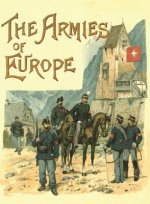
Armies of Europe Illustrated
29.52 € -
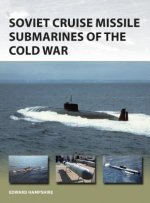
Soviet Cruise Missile Submarines of the Cold War
20.29 € -3 % -

Black Prince And The Sea Devils
42.61 € -

Truth About The Wunderwaffe
45.96 € -

Kill Anything That Moves
18.66 € -19 % -

Helmet for my Pillow
14.30 € -23 % -

Forgotten Highlander
14.30 € -23 % -

TM 9-803 Willys-Overland MB and Ford Model GPW Jeep Technical Manual
18.66 € -18 % -

With the Old Breed
16.43 € -23 % -

Sleepwalkers
19.17 € -20 % -
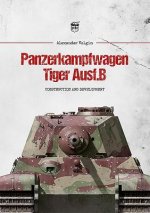
Panzerkampfwagen Tiger Ausf.B
24.85 € -12 % -

D-Day
11.05 € -23 % -

War that Ended Peace
16.02 € -

Second World War
31.45 € -

Band Of Brothers
10.75 € -10 % -

American Sniper
13.28 € -16 % -

Battles Map by Map
32.26 € -14 % -

Brothers in Battle, Best of Friends
15.31 € -20 % -

Eastern Approaches
14.30 € -23 % -

Citizen Soldiers
14.30 € -23 % -

Fate is the Hunter
12.17 € -23 % -

Shattered Sword
29.93 € -16 % -

Panzerjager on the Battlefield
28.20 € -23 % -

Fairbairn-Sykes Commando Dagger
17.55 € -23 % -

Templars
12.07 € -24 % -

Bravo Two Zero
11.46 € -20 % -

Military History Book
32.46 € -23 % -

Lost Victories
24.55 € -21 % -

The Second World War
16.84 € -22 % -

Hirohito and the Making of Modern Japan
20.69 € -20 % -

T-34 on the Battlefield. Volume 2
35.61 € -16 % -

Reaper
14.91 € -22 % -

RAF Battle of Britain Fighter Pilots' Kitbag
18.56 € -23 % -

Art of War
10.85 € -24 % -

Pacific Crucible
21 € -19 % -

Soldaten - On Fighting, Killing and Dying
11.05 € -23 % -

1914-1918
23.43 € -13 % -

SS Charlemagne
20.08 € -16 % -
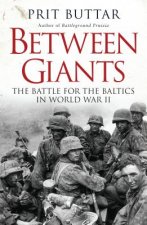
Between Giants
18.36 € -21 % -

German Panzers 1914-18
17.65 € -5 % -

War Like No Other
15.21 € -21 % -
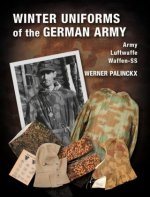
Winter Uniforms of the German Army
107.56 € -
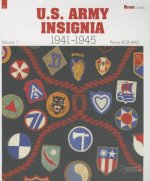
Us Army Insignia 1941-1945 Vol. 1
27.29 € -

Pacific Profiles - Volume Three
33.99 € -16 %
Osobný odber Bratislava a 2642 dalších
Copyright ©2008-24 najlacnejsie-knihy.sk Všetky práva vyhradenéSúkromieCookies


 21 miliónov titulov
21 miliónov titulov Vrátenie do mesiaca
Vrátenie do mesiaca 02/210 210 99 (8-15.30h)
02/210 210 99 (8-15.30h)